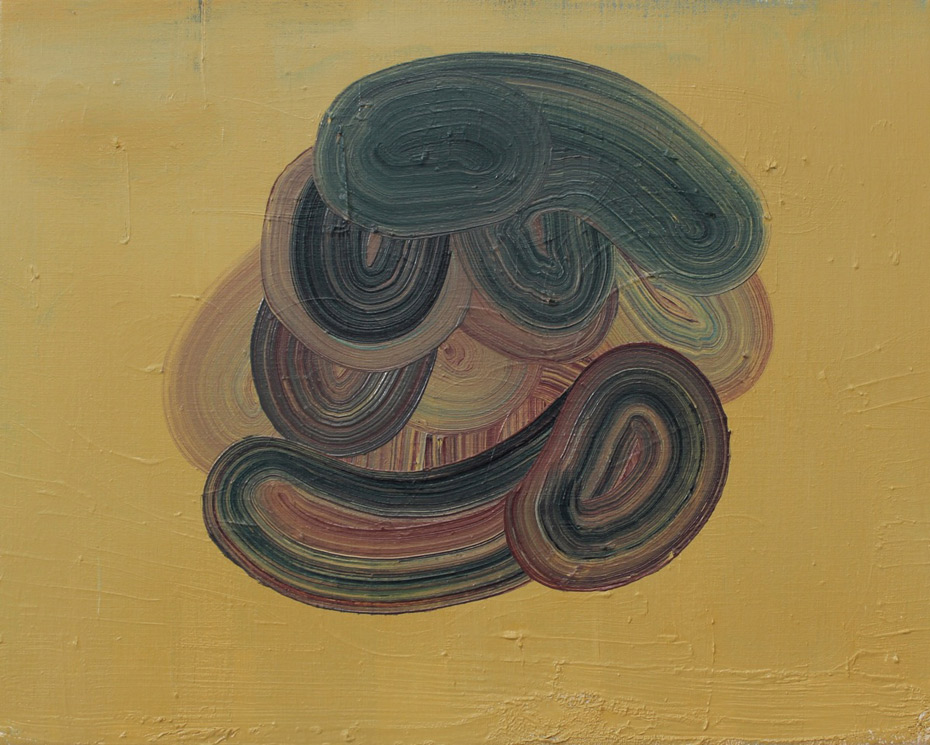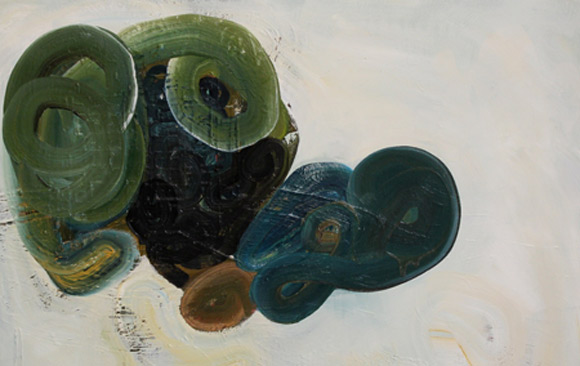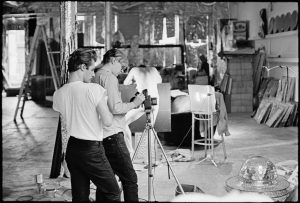Though she’s yet to have her first solo-show, the Danish artist is creating waves with her ‘kruseduller’ oil paintings, combining palette and movement. Words Betty Wood

Artist Maya Stefania’s entry into the art world is perhaps as unorthodox as it is surprising, “likely due to my upbringing in a working class family, where an education like that wasn’t considered”, she explains. As the daughter of an accountant mother and a carpenter father, Stefania broke from family tradition in going to university. She studied classical archeology, itself a suspect subject for a family versed in practical skills. Still, “It never occurred to me to apply for an art academy,” she adds, though “I always enjoyed drawing… I drew on everything – books, furniture, albums! But I never had an artistic approach to what I was making – I was more interested in the stories that I made up to go along with my drawings.”
Half way through Stefania’s degree, she moved to San Francisco when her partner landed a job in Silicon Valley. It was a move that changed both of their careers: starting a second degree in anthropology, Stefania also began taking classes at the California Academy of Painters. Painting en plein air – “my teacher, Brigitte Curt, was an old school French impressionist”, she explains – Stefania learned the basics of oil painting, how to consider focal point, start in monochrome and build layers of colour. Beside “older ladies in broad-brimmed hats and lipstick”, she developed an understanding of theory, and more importantly, an understanding of what she wanted her art to achieve. “I never wanted to be a landscape painter – but I realised that, for me, painting was like coming home”.

Moving back to Denmark in 2006 with her husband and one-year old daughter Vera, she spent the next few years “being a mom, renovating a house… being absorbed in life, really”. Continuing to paint, she began solidifying the techniques she’s learned under the tutorage of Madame Curtis, and harbouring ambition to study further. In 2010, she enrolled at Århus Art Academy to study under Annette Olesen, where she really began to develop her own style.
“I started making figurative paintings, but they were so loaded with people, islands and stories that was not much space left for the viewer”. Negotiating this space for the audience – this ‘thinking’ space – saw Stefania abandon the detail-orientated figurative style she’d started with. “I wanted to break free from its meticulous language – my way out of it was to go completely abstract and messy. The results are ‘kruseduller’ – I can’t find a word that translates’, she apologises. The closest I’ve found is ‘doodle’, which falls categorically short of what Stefania achieves with her paintings, but encapsulates perfectly the fluidity of her brush strokes, and tentative exploration of material through movement. Stefania embraces impasto; “I load my brush with a lot of paint and oil, and go for as long as I can. The funny thing is that , but each really differs in their appearance and quality – some come out to be more than the sum of paint; the movement; the canvas. Those ones appear as art, and it’s those ones I appreciate”.

“Of course”, Stefania continues, “others come out completely uninteresting – those ones I will just repaint!” For Stefania, the excitement lies in finding this balance – “It puzzles and challenges me to find out where the art is”. And of course, her enjoyment of the act: “My medium of choice is oil. I enjoy the smell, the mess; the organic touch, even the slow drying of the paint. I don’t use chemicals or dryers – I give the paintings the time they need.” This ‘practical integrity’ is important to her. “I appreciate when the artist is completely honest in their way of laying down the paint. I like it when the gesture behind the stroke is readable, when they are strong and visible”. Perhaps it’s no surprise then that she lists Van Gogh as one of the artist she particularly admires – “It might sound clichéd, but I’m really attracted to his way of painting” – as well as American artists Dan Schein and Peter Doig.

Stefania notes the importance of evolving her ‘kruseduller’ in order to keep them alive. “Lately, I’ve tried to integrate them into figurative paintings. It’s a good challenge,” she adds, as “it keeps me on my toes, balancing mess and more orderly figures in a single painting. Painting is like a language that continuously evolves with new expressions and techniques so I plan to jump around as I please in both the figurative and abstract worlds.” It seems there’ll be ample room for her to do so at Vest, her new studio – which has its grand opening in Århus on 14 September. It was created with fellow painter Line Busch and ceramist Line Riisager. “It’s primarily going to be our workspace, but we plan on having some exhibitions in the future of both our own work, and of other artists”.
www.mayastefania.com




